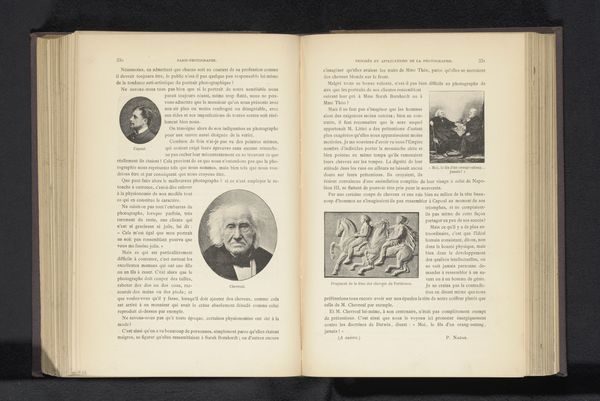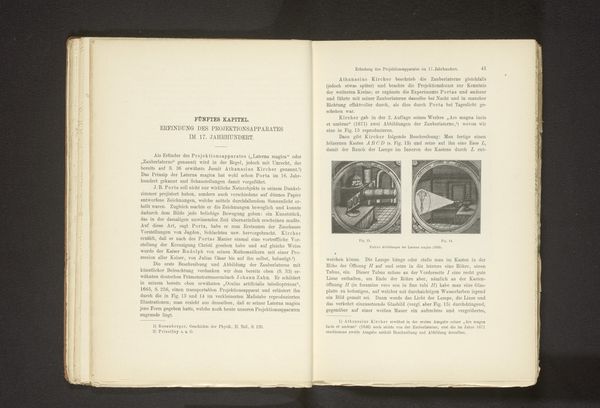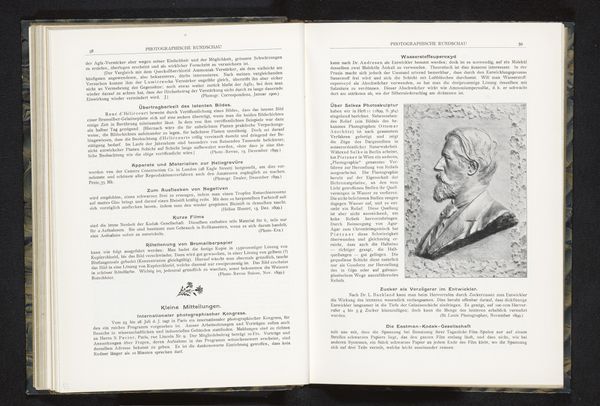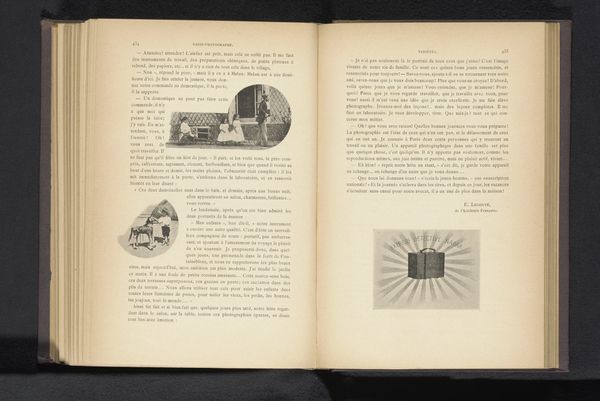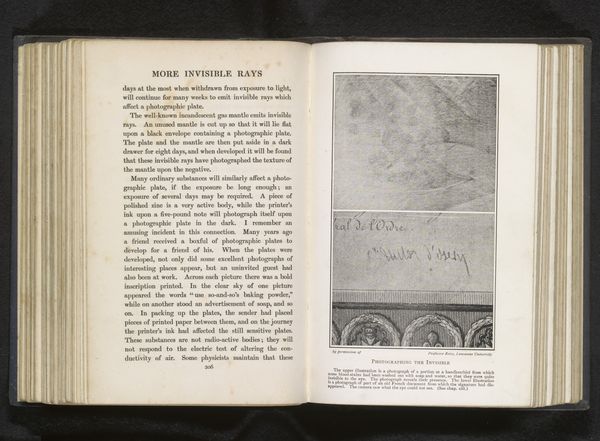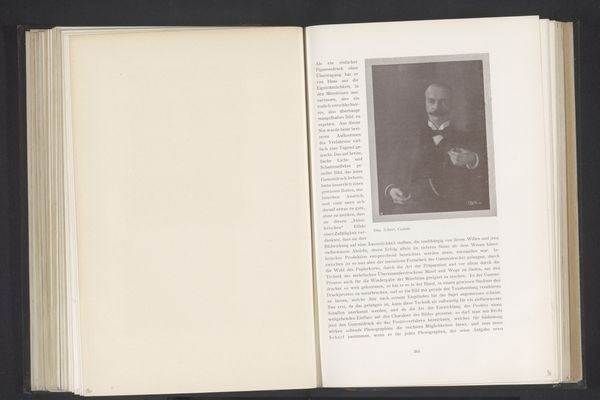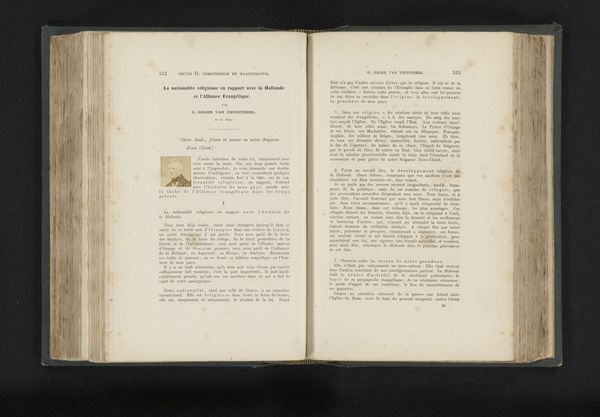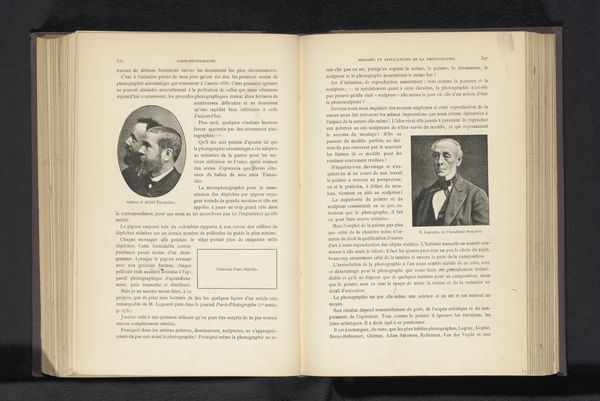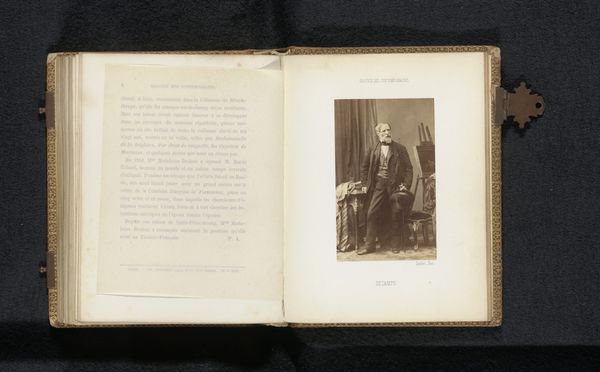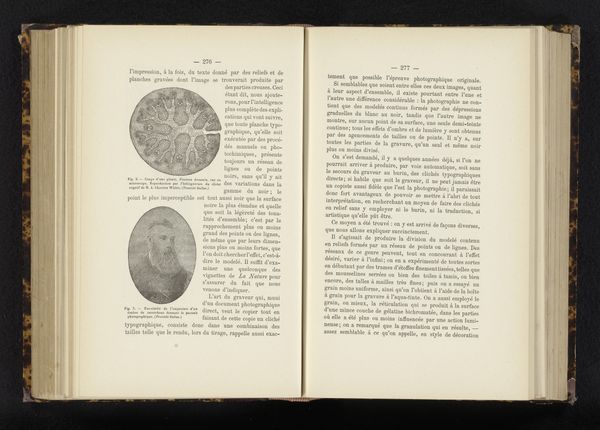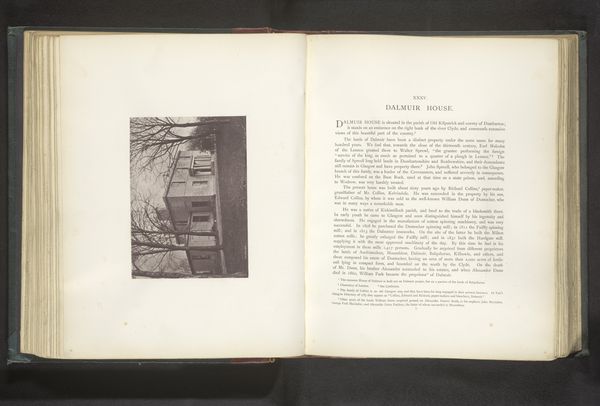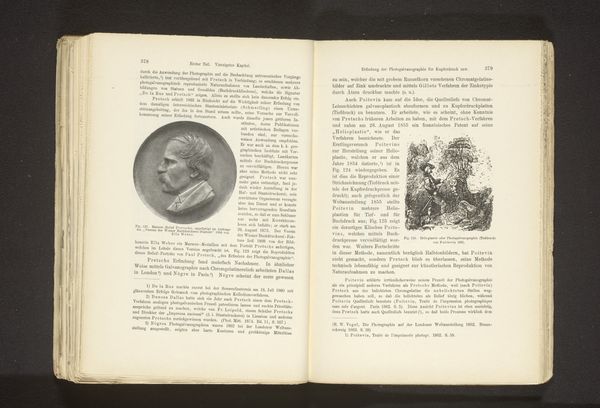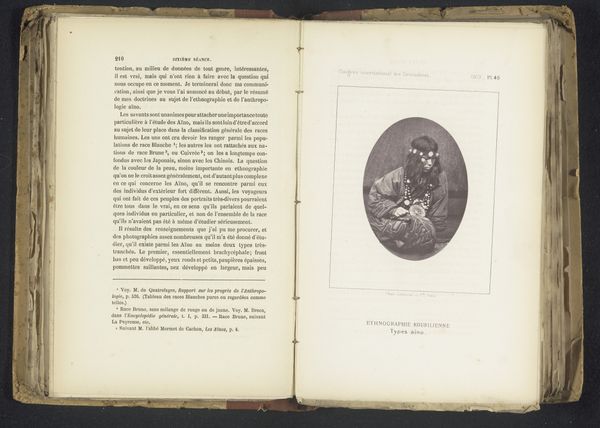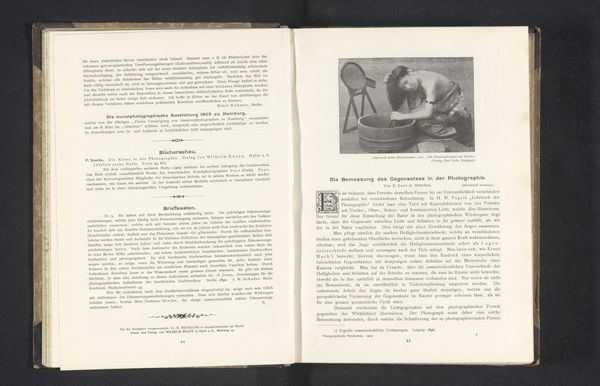
Gezicht op een riool en een catacombe en een portret van Gustave Doré en een onbekende vrouw before 1892
0:00
0:00
print, photography
#
portrait
#
still-life-photography
# print
#
book
#
photography
#
genre-painting
Dimensions: height 259 mm, width 175 mm
Copyright: Rijks Museum: Open Domain
Curator: Here we have a look inside a book opened to a spread titled "Gezicht op een riool en een catacombe en een portret van Gustave Doré en een onbekende vrouw", which roughly translates to "View of a sewer and a catacomb and a portrait of Gustave Doré and an unknown woman". It's an anonymous print dating to before 1892, currently held at the Rijksmuseum. Editor: What a curious composition! A sewer, a catacomb, and portraits juxtaposed like this creates such an unsettling vibe. The black and white photography and grainy texture really add to the grim, almost macabre feel. I wonder about the materiality of the book itself—the paper, the printing process. Curator: This image likely speaks to a fascination with the underbelly of 19th-century Parisian life, exposing the social realities that often went unseen or ignored. Doré, after all, made a name depicting such realities. Editor: Yes, and think about the means of reproduction. Photography made it possible to mass-produce these images, disseminating scenes of both high society, with Doré's portrait, and the city's most marginalized spaces like the sewer and catacombs, capturing this raw materiality. Curator: Exactly! This reflects a growing social awareness, fueled by the Industrial Revolution and subsequent class divisions. This book presents a diverse range of subjects but speaks to how the other half lived. Photography made all this so accessible to broader audiences. Editor: It does highlight how "high" art and depictions of more "lowly" subjects coexisted and circulated during this period, through the physical book and photography's ability to disseminate images widely. Considering the labor that went into papermaking, printing, photography… it’s a fascinating object. Curator: Indeed, it's a reminder of the layers of societal complexity at the time—and how artistic and documentary pursuits were intertwined, reaching both elite and broader audiences in the streets. Editor: It prompts me to consider the sheer amount of manual work required in this era's printing, from prepping the chemicals for the photo development to typesetting the letterpress blocks. A real blend of technology and handcraft.
Comments
No comments
Be the first to comment and join the conversation on the ultimate creative platform.
